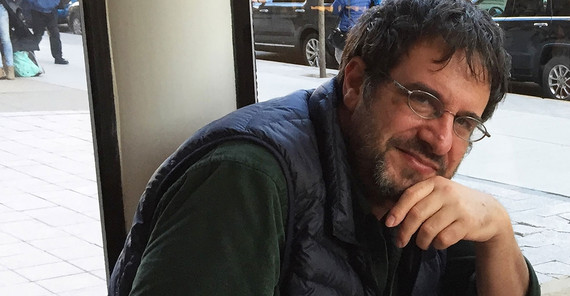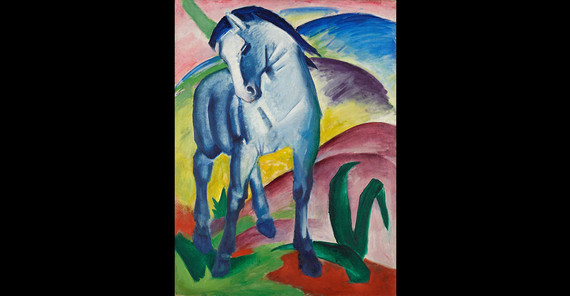When you look at the paintings of Franz Marc, you will notice expressionistic and almost cubist forms in addition to another striking feature: deep, vivid colors. Blue plays a particularly prominent role in his “Blue Horses” and other animal motifs. This is why he and his fellow artist Wassily Kandinsky named their artist group “The Blue Rider.” The meaning of colors, especially in the works of Franz Marc, Wassily Kandinsky, and Paul Klee, is also of interest to the Israeli thinker Eli Friedlander, who is currently a guest at the University of Potsdam as a Meitner Prize Humboldt Fellow. The philosopher has developed a special affinity for the aesthetics of Walter Benjamin, who frequently explored concepts from painting – such as pictorial space and medium, surface and depth, mark and color.
But it is not only Benjamin’s aesthetics that interests Friedlander – it is the entire oeuvre of the German-Jewish philosopher of the early 20th century. Benjamin’s most famous work, The Work of Art in the Age of Mechanical Reproduction, is likely known beyond philosophy lecture halls. Although some of Benjamin’s work remains fragmentary, Friedlander perceives a unity in it. The Israeli philosopher is also particularly interested in the theme of nature and its (cultural) history in Benjamin’s philosophy and in the art of “The Blue Rider.” Eli Friedlander studied in Israel and the U.S., where he received his Ph.D. from Harvard University. He is now the head of the Institute of Philosophy at Tel Aviv University (TAU).
Recently, the Israeli philosopher has forged connections with Germany, specifically in Berlin and Potsdam, where he is a guest at the Center for Post-Kantian Philosophy (CPKP), led by Potsdam philosopher and Kant expert Prof. Dr. Thomas Khurana. Friedlander and Khurana share a close and productive academic exchange, not only on Enlightenment philosophers but also on topics beyond that period. Thomas Khurana nominated his Israeli colleague Friedlander for the Meitner-Humboldt Research Award, which Friedlander received in 2024. He will now be visiting Potsdam regularly to further expand these established connections. This will include longer stays and joint projects with the CPKP. In early May 2024, Friedlander delivered his first lecture there on his current research project, “The Idea of Natural History in Kant, Benjamin, and Wittgenstein.”
When Eli Friedlander talks about Walter Benjamin and his work, his eyes light up. The Israeli philosopher has devoted significant attention to German thinkers throughout his academic career. He has published books on Wittgenstein’s Tractatus, Rousseau’s Rêveries, and Kant’s Critique of Judgment. His “obsession” with Walter Benjamin, as he calls it, developed later. His new book, Walter Benjamin and the Idea of Natural History, was just published by Stanford University Press.
Personally, Friedlander is grateful for the opportunity to travel to Europe and Germany, especially during exceptionally difficult times in his home country. Berlin is a city he enjoys returning to again and again, not least because he has family there. The city can also be explored and understood through the lens of Walter Benjamin. In his book Berlin Childhood Around 1900, published posthumously by Theodor W. Adorno in 1950, numerous Berlin locales are depicted – places Friedlander had already explored as he was reading the book and during earlier visits to the city. Guided by Benjamin’s descriptions, he strolled through Berlin’s Tiergarten and Zoo, for example. He also retraced the philosopher’s steps at the present-day Platz der Republik, where the Siegessäule (Victory Column) stood in 1900, and at what was then Friedrich-Karl-Platz (now Klausenerplatz) near Charlottenburg Palace.
Professor Eli Friedlander was a guest at the CPKP in person until July 2024 and will return in summer 2025 and 2026. During his time here, he will continue to lecture, conduct research, and publish on Benjamin’s aesthetics and the history of philosophy since Kant.
The website of the Center for Post-Kantian Philosophy (CPKP) at the University of Potsdam: https://cpkp.net/


